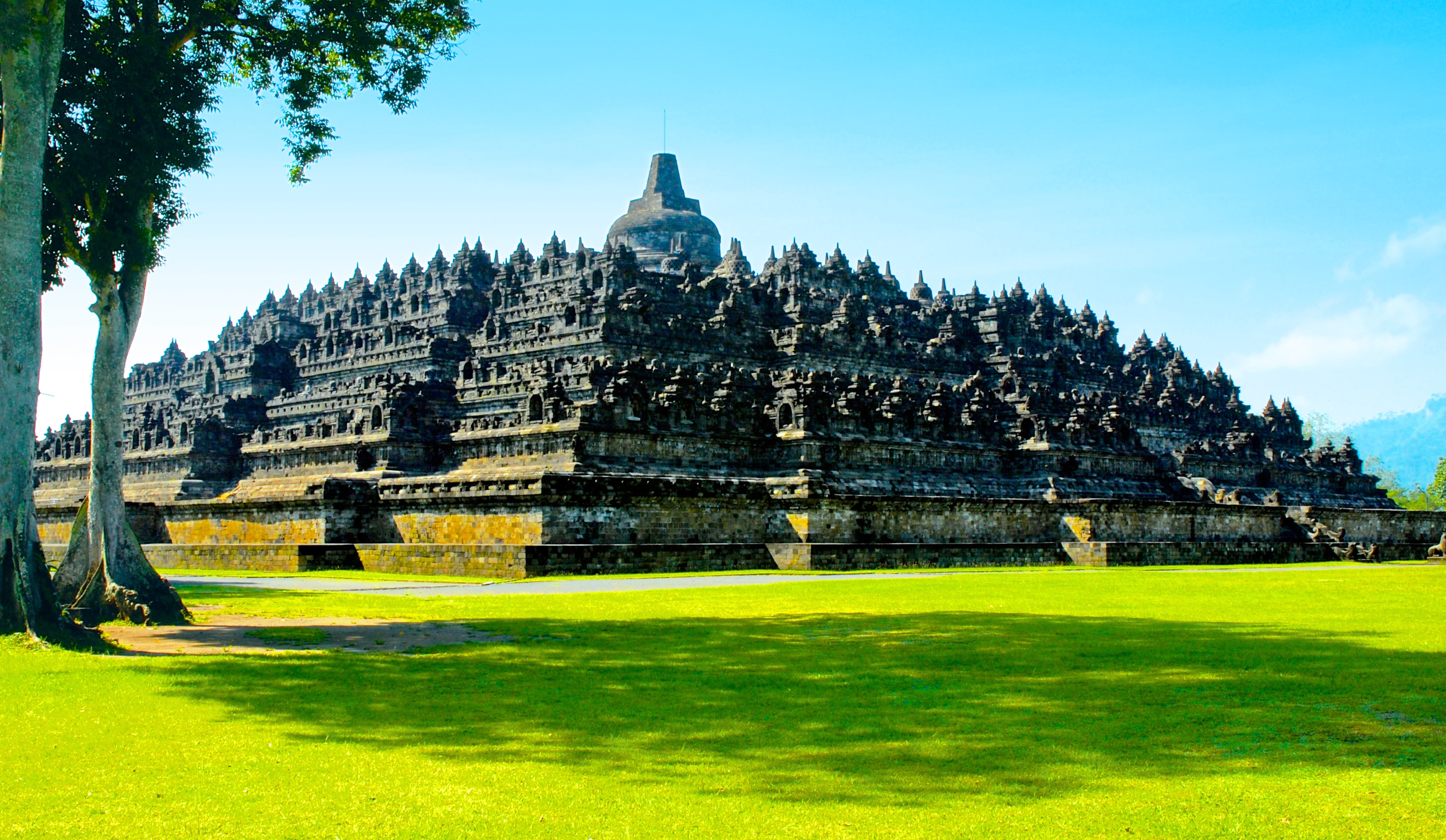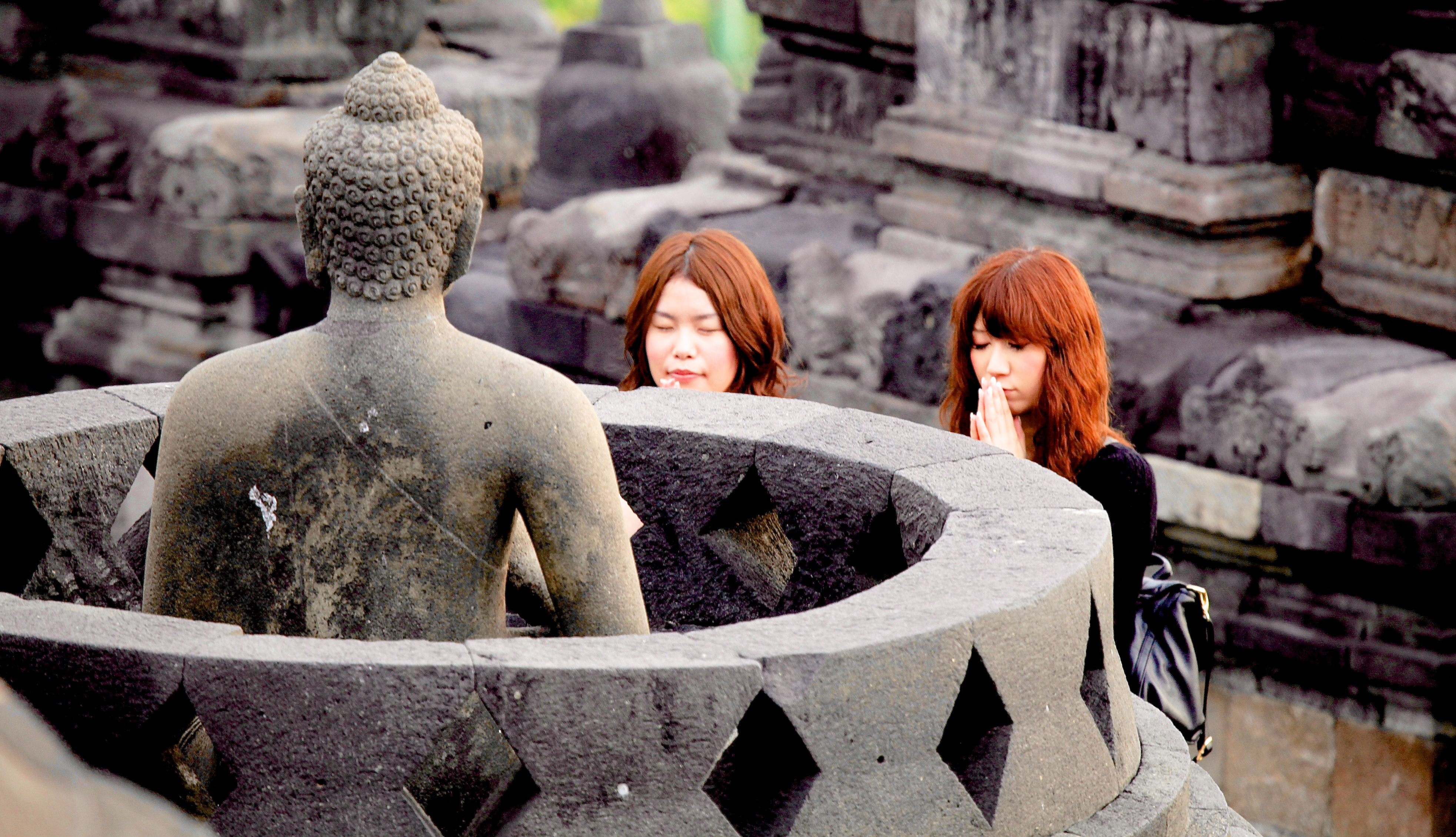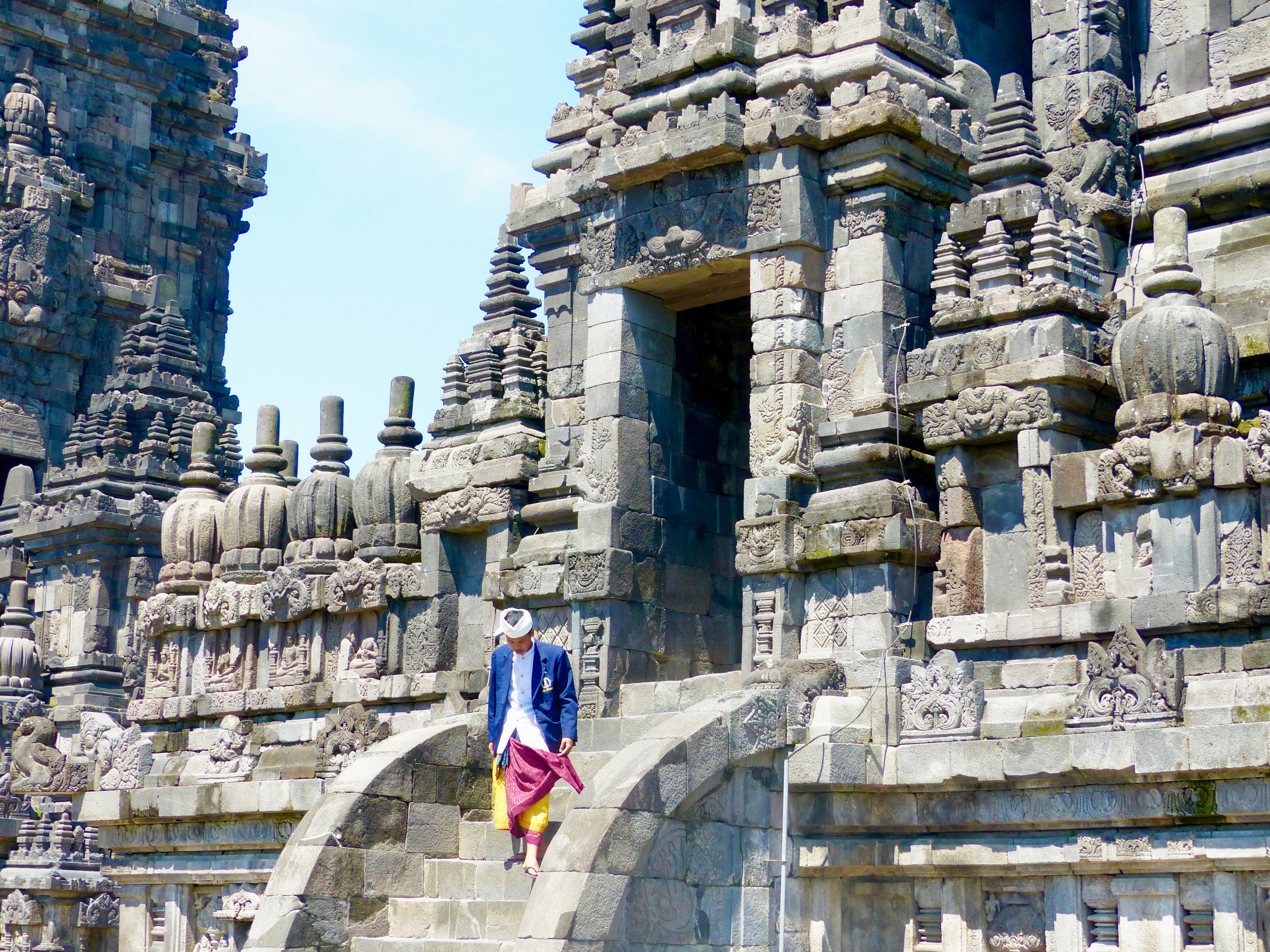YOGYAKARTA, Java, Indonesia — Java is an island of the unexpected. Located between Sumatra and Bali in Indonesia — the nation with the biggest Muslim population on the planet — Java is home to the world’s largest Buddhist temple, along with a massive Hindu temple complex that rivals Cambodia’s Angkor Wat.
Our guide, a quick-quipping local who introduced himself with “call me Yoga,” explained we shouldn’t be surprised. Religious acceptance is part of life on Java.
“Hindu, Buddhist, no problem,” he said brightly.
There’s also a centuries-old coffee culture on the island, arriving courtesy of the colonial Dutch. Where do you think “a cup of java” got its nickname? Even our small tour bus had a countertop-style coffeemaker plugged in behind the driver to brew a pot on request. The most prized coffee comes from a very unlikely source: the droppings of the wild civet cat, known as luwak. More on that later.
Borobudur, the largest Buddhist temple in the world, and the Hindu temple complex of Prambanan, are stunning sculptural artworks, dating back to the 8th and 9th centuries. Mysterious and spiritual, they are for the faithful as well as tourists and were the highlights of our two-day stop in Java.
We visited Prambanan first, the intricately carved cluster of conical temples, one of which stretched 47 metres high and echoes Angkor Wat. But this was built three centuries earlier.


Above: Magnificent Borobudur Temple draws many worshipers and visitors. It's Java superstar tourist site.
The next morning, we went to Java’s superstar site, Borobudur.
You could squeeze in both in a day if you’re hearty — and maybe a little foolish. On the map, Prambanan is about 16km from our base, Yogyakarta, while Borobudur is some 42km in the other direction. Typical of big Indonesian cities, Yogyakarta (Yogya to locals) is crazily traffic clogged and almost unbearably hot. What looks like a quick trip on Google maps can be a punishing drive.
Plus, these are huge sites to explore. Prambanan has a “train” to get you from the visitor centre to the temples but expect to do a lot of walking at both sites.
A wide-brimmed hat, sunscreen and lots of water are required to get through these complexes.
Patience helps, too. Borobudur is especially crowded. About 500,000 international tourists and some 100,000 domestic travellers visited last year. The steep and narrow carved volcanic stone stairways up to the terraces are often jammed with selfie stick-wielding tourists.
Some may skip Prambanan if time in Java is tight, but that would be a shame. There is a $40 (U.S.) combined-admission ticket that can be used over two days to ensure you see both.
Built in the 9th century with temples dedicated to the worship of Shiva, Brahma and Vishnu, there are eight restored lava-stone temples and shrines of the original 240 built and still to be restored, which gives you an idea of how massive this site is.
The carved reliefs can be admired from terraces around the temples, telling stories from the Hindu religious epic, Ramayana, of demons, intrigue, magic animals and a kidnapped loyal wife.
We’d see these characters come to life that evening at the colourful and highly stylized Ramayana Ballet, which is performed across Java. Our show was in an open-air theatre at a large Yogyakarta restaurant complex but there are performances on an outdoor stage at Prambanan.
Next morning we visited the biggest tourist draw on Java, Borobudur. While I shudder at overused terms like “see before you die,” there’s no question that this is one of the most powerfully emotional and architecturally beautiful sites I have ever explored.
Surrounded by green jungle, Borobudur is laid out like a Buddhist mandala and has been likened to a wedding cake with its rising layers of five square terraces and three circular platforms leading to a huge dome at the top. Like Prambanan, the terraces are ringed in fantastic carved reliefs, these ones telling stories of Buddha.
Originally there were more than 500 Buddha statues, but more than half were damaged in the past (heads were popular souvenirs, many of which ended up in museums). A few dozen others were stolen.
The Buddhas are mesmerizing. Yoga explained the significance of their different hand positions, from courage, to turning the wheel of dharma.


Above: Prambanan Temple is one of the most stunning of its kind from the ancient world and remains a working religious site.
The square terraces have carved Buddhas sitting in the lotus position inside stone niches. A further climb to the circular terraces represents the journey to achieving Nirvana and reveals 72 lattice-carved bell-shaped stupas. Peer into the square or rhombus-shaped holes to see the Buddha inside, seated in shadow, seeming to be patiently waiting for eternity.
An open stupa reveals one of these large Buddhas, the intricately carved face in sublime meditation.
As with Prambanan, we were trailed by local students anxious to work on their English.
A giggling group of petite high-schoolers and their teacher found my 6-foot-5 partner irresistible and kept asking for selfies, which he was happy to oblige.
Borobudur is an undisputed Instagram darling. Sunrise and sunset tours are especially popular.
On the way back to Yogya, we stopped at Pawon Luwak Coffee to learn about the famously rare and expensive cup of java that made Morgan Freeman laugh until he cried in the 2007 comedy The Bucket List.
Touted as having beneficial properties for everything from protecting teeth to preventing diabetes, it’s smooth, delicious and ridiculously expensive, selling for up to $100 a cup in New York and London.
The animals devour the coffee cherries and, thanks to an enzyme in their gut, excrete coffee that’s less acidic. We were told these beans come from wild civets living in the coffee plantations, which helpfully return to the same spot each day to “produce” the coffee beans for collection.
After the coffee cherries are pooped out, they’re peeled and roasted.
A cup of the luwak brew was $5 and a 100-gram bag of robusta beans set me back $25. Surprisingly, here was a product that lived up to the hype. I wouldn’t pay $100, but for a fin, it was an excellent cup of java, smooth and rich, a perfect way to salute an extraordinary Java day.
JUST THE FACTS
Getting there: Various airlines fly to Yogyakarta from Indonesian cities, although you may have to go via Indonesia's capital Jakarta.
Where to stay: The five-star Phoenix Hotel Yogyakarta is an MGallery by Sofitel property located in an early 20th-Century colonial mansion. It’s close to Malioboro St. and its busy market. The bathroom amenities are nestled inside traditional Javanese wedding figures and the hotel is filled with art and artifacts. Pool and excellent buffet breakfast. Room rates from $75.
Information: For information on visiting both temple complexes, go to http://www.borobudurpark.com/en/home-2/